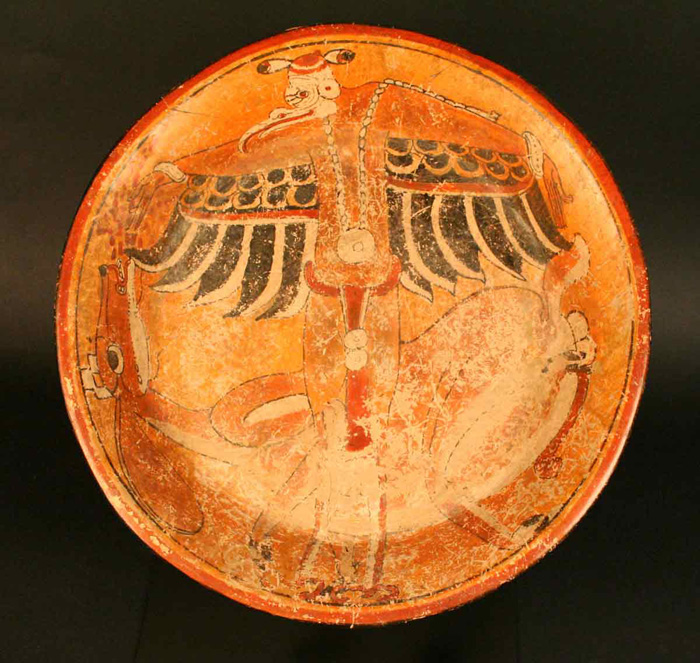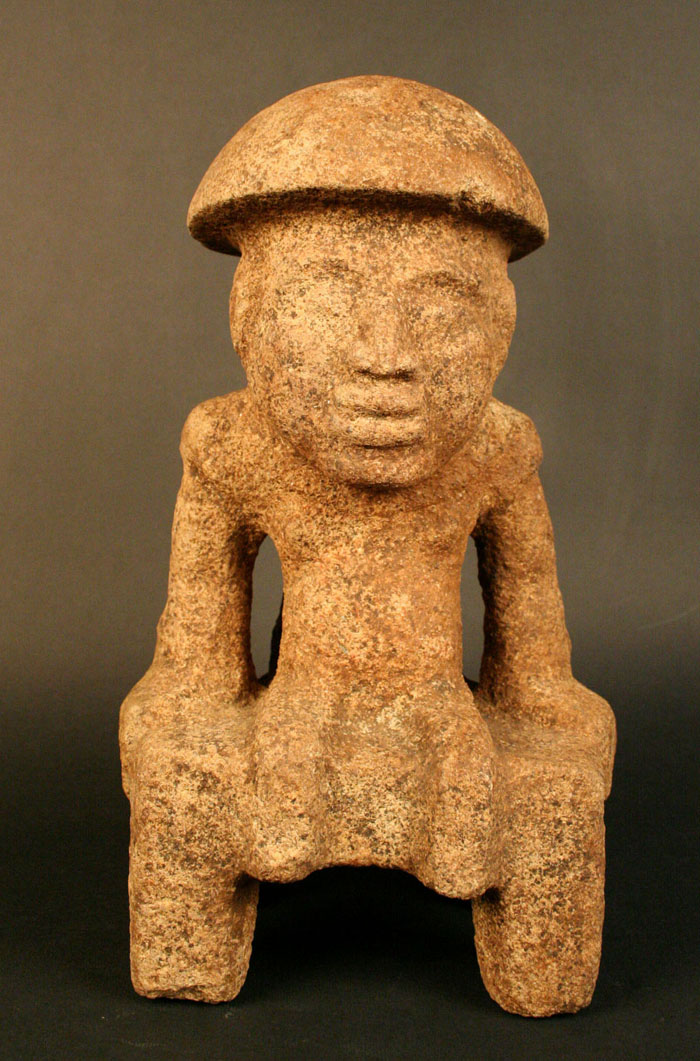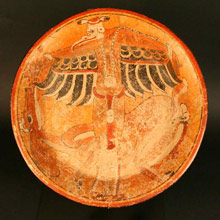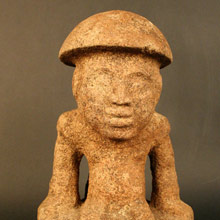Today, some Mesoamerican shamans eat a mushroom called teonanácatl, or “water child”, because of its small size and because it sprouts in the fields after rain. Swallowing it produces hallucinations of little men who resolve difficulties. These effigies with the semispherical heads and ecstatic expressions on their faces, found in southern Mexico, in the highlands of Guatemala and in El Salvador, represent those mythic “water children”. The man-bird that appears on this plate seems to be a way, or, Maya shaman.



Plato trípode con representación pictórica
Materials: Ceramic
Clásico Tardío 600- 900 d.C. Fases Coyotlatelco y Texcalac.
Measures: 114 mm de alto
Part Code: MCHAP 0341
See the profile of this piece
Figura antropomorfa: hombre-hongo o “Teonanácatl”
Materials: Stone
Preclásico Tardío 500 a.C.- 0
Measures: 335mm de alto
Part Code: MCHAP 0835
See the profile of this piece




































